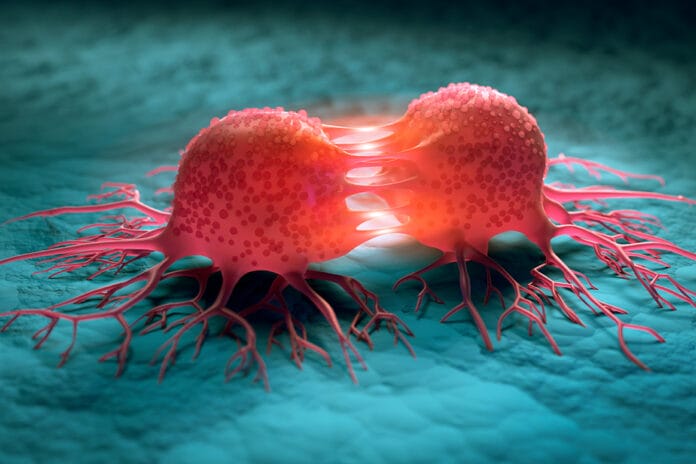In the world of dentistry, staying informed about the latest research and developments is essential to provide patients with the best care possible. Recently, a study published in Science Signaling has identified an intriguing connection between oral cancer progression, associated pain, and a protein known as the ORAI1 calcium channel.1
Led by researchers at NYU College of Dentistry, this study sheds light on a potentially new approach to treating oral cancer while alleviating the persistent pain that accompanies it.1
Named after the mythical guardians of Mount Olympus in Greek mythology, the ORAI1 calcium channels act as gatekeepers for calcium entry into cells. These channels are indispensable for controlling the influx of calcium, a vital element for cell function. As Professor Rodrigo Lacruz, a molecular pathobiology expert at NYU College of Dentistry and the senior author of the study, explains, “These calcium channels can be a source of good or bad for cells.”2 Calcium is indeed essential for many cellular processes, but excessive or prolonged calcium entry can have adverse effects.1
While previous studies have linked calcium channels to various cancers, including cancer progression, the role of ORAI1 in oral cancer and pain has remained relatively unexplored. Ga-Yeon Son, a postdoctoral fellow in the Department of Molecular Pathobiology at NYU College of Dentistry and the study’s first author, stated, “Calcium influx through ORAI1 channels has been well known to contribute to the regulation of gene expression, but notably, our investigation extends its function to altering oral cancer pain.”2
The Study
The research began with the analysis of tissue samples from oral cancer tumors and healthy tongues. The results revealed a significant overexpression of the ORAI1 gene, responsible for creating the ORAI1 calcium channel, in the cancerous tissue compared to healthy tissue. Subsequent experiments with oral cancer cells demonstrated that activating the ORAI1 calcium channel led to a substantial influx of calcium, triggering the production of matrix metalloprotease 1 (MMP1). This enzyme, found in abundance in various cancers, including oral cancer, has been associated with metastasis and poor prognosis.1
To further understand the role of ORAI1 in oral cancer pain, the researchers collaborated with scientists from the NYU Pain Research Center. They examined the levels of MMP1 expressed in the fluid surrounding oral cancer cells and observed that cells lacking the ORAI1 gene secreted less MMP1. When this fluid was introduced to neurons from the trigeminal ganglia, which transmit pain signals in oral cancer, it elicited a muted response compared to the strong reaction induced by MMP1-rich fluid from cells containing ORAI1.1
The Results
These findings suggest that an abundance of MMP1 may contribute to heightened pain sensitivity in patients with oral cancer, shedding light on a potential mechanism for the pain associated with the disease.1 Ga-Yeon Son states, “Our results show that the ORAI1 channel fuels the growth of oral cancer tumors and produces an abundance of molecules that, once secreted, interact with neurons, resulting in an increased sensitivity to pain.”2
Perhaps the most exciting aspect of this research is its potential for therapeutic applications. While several FDA-approved drugs already block the ORAI1 calcium channel, their use in treating oral cancer remains unexplored. Future studies will investigate whether nanoparticles can be loaded with ORAI1-blocking drugs and precisely delivered to the tongues of animal models to halt oral cancer progression and alleviate pain.1
Rajesh Khanna, director of the NYU Pain Research Center and a co-author of the study, emphasized the importance of this research in the context of the opioid crisis, stating, “In light of the ongoing opioid crisis, our study paves the way for validating novel pain treatments in oral cancer.”2
Conclusion
Ultimately, the hope is that targeting the ORAI1 channel in oral cancer could not only delay the progression from oral epithelial dysplasia to tumors but also provide much-needed relief for the pain burden experienced by patients with oral cancer.
For dental hygienists, staying informed about these cutting-edge developments in oral health research is crucial, as hygienists can be the first line of defense when performing oral cancer screenings and detecting suspicious lesions. Understanding the potential role of ORAI1 in oral cancer and pain opens up new possibilities for patient care, making it essential to keep an eye on further advancements in this field.
Before you leave, check out the Today’s RDH self-study CE courses. All courses are peer-reviewed and non-sponsored to focus solely on high-quality education. Click here now.
Listen to the Today’s RDH Dental Hygiene Podcast Below:
References
- Son, G.Y., Tu, N.H., Santi, M.D., et al. The Ca2+ Channel ORAI1 is a Regulator of Oral Cancer Growth and Nociceptive Pain. Science Signaling. 2023; 16(801): eadf9535. https://doi.org/10.1126/scisignal.adf9535
- New York University. (2023, September 5). ‘Gates of Heaven’ Calcium Channel Drives Oral Cancer Pain and Growth. ScienceDaily. www.sciencedaily.com/releases/2023/09/230905155711.htm










